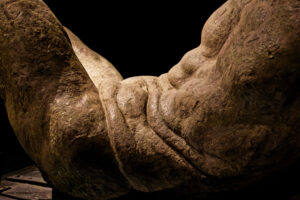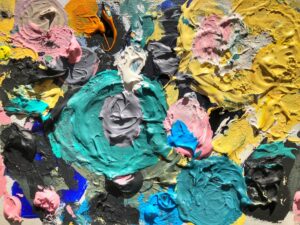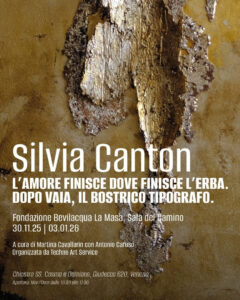Introduction
In the contemporary context, art is not only a means of expression, but a reflection of social, political and economic dynamics. Through iconic works such as Picasso’s ‘Guernica’, which denounces war, or Banksy’s provocative installations criticising capitalism, art becomes a lens through which to observe the injustices and aspirations of society. Have you ever thought about how a work can influence your perception of reality? Every brushstroke and every sculpture tells a story that connects the past to the present, inviting reflection and action.
Art as a reflection of society
Art acts as a mirror for society, capturing the emotions, struggles and aspirations that define an era. Through canvases, sculptures and performances, artists capture the essence of social and cultural contexts, allowing you to explore the dynamics of everyday life. The artworks not only reflect reality, but also stimulate critical reflection on the world around you, making them important tools for social change.
Social themes in art
Social issues such as justice, gender equality and human rights frequently emerge in art, providing a platform for voice and protest. Contemporary artists, such as Banksy, use their works to expose injustices and activate change. This approach not only raises awareness, but also invites you to take part in the dialogue on issues that directly affect you.
The impact of culture on creativity
The culture you are immersed in profoundly influences your creativity, shaping your perceptions and values. Local traditions, music, literature and everyday experiences feed your imagination and become sources of inspiration. For example, Italian Renaissance art reflected the intellectual and spiritual fervour of the time, while contemporary currents embrace a variety of global influences, allowing each artist to reinterpret their own reality.
Culture defines not only what you consider beautiful or meaningful, but also how you express your ideas. Your cultural heritage, shared values and local traditions can stimulate your imagination, leading you to create works that speak of your environment. Artists such as Frida Kahlo used their cultural identity to explore personal experiences in a broader context, demonstrating how creativity can serve as a catalyst for social awareness. Through this exchange between culture and art, you can not only reflect on the world, but also connect with it in deep and meaningful ways.
Art history and social change
Over the centuries, art has constantly reflected social change, becoming a visual chronicle of cultural and political transformations. Each era has left its mark, from Renaissance works celebrating human beauty to contemporary works challenging social norms. Using visual language, artists have given voice to protest movements, criticised injustices and raised relevant social issues, thus influencing collective thought and social action.
Art movements and their context
Art movements were never born in a vacuum, but as a direct response to historical, political and economic contexts. Futurism, for example, expressed the dynamism of modernity and the rejection of the past, while Surrealism dealt with the unconscious and dreams at a time of world crisis. These movements are mirrors of society, revealing collective concerns and aspirations.
The evolution of the artistic message over time
Over the centuries, the artistic message has evolved profoundly, adapting to changing societies. Pre-Roman art, for example, expressed an adoration for the divine, while in the Baroque there was a shift towards a representation of emotion and grandeur. With modern art, trends emerge that challenge conventions, such as the concept of ‘art for art’s sake’. Today, art addresses global issues such as climate change, equality and identity, exemplifying an active engagement with the contemporary world.
Contemporary art and current challenges
Contemporary art is confronted with a multiplicity of challenges, including increasing social polarisation and environmental crises. Artists respond to these pressures with works that not only document, but also comment on and criticise the contemporary context. Through different media, art becomes a vehicle for urgent discussions, inviting the public to reflect and act.
Representation of modern crises
In recent years, many artworks have addressed issues such as economic inequality, geopolitical conflicts and climate change. Using their creativity, emerging and established artists transform personal and collective experiences into visual narratives that speak of the crises that society experiences. For example, interactive exhibitions and immersive installations can stimulate a deep emotional response in the audience.
Art as a tool for activism and change
When art meets activism, a powerful tool for social change is created. Artists such as Ai Weiwei use their platforms to raise awareness on issues of human rights and freedom. Through art campaigns, public installations and performances, you can see how art becomes a catalyst for change, mobilising people to unite for common causes and reflect on the impact of their actions.
Activist art has been shown to influence social and political movements, such as Banksy’s work on the refugee issue or Christo’s installations drawing attention to the environment. These works can not only raise awareness, but also generate a dialogue that leads to real civic engagement. At a time when individual voices may seem small, art offers a space where you can express and share ideas that, united, can lead to meaningful and lasting change.
The perception of art in the digital world
The enjoyment of art has changed dramatically with the advent of digital, making works once only accessible in museums and galleries available to anyone with a connected device. This has democratised art, allowing more people to explore styles and movements they would never have known before. However, with this accessibility also comes the question of quality and originality, as digital art can be easily replicated and shared.
The influence of technology on art
Technology has transformed the way you create and experience art. Tools such as advanced graphics software or augmented reality apps allow you to express yourself in innovative ways, expanding creative possibilities. Contemporary artists use these technologies to explore new and interactive forms, creating an ongoing dialogue between art and technology.
Transforming artistic experiences through media
Digital media have revolutionised art experiences, including videos, podcasts and virtual exhibitions. This evolution allows us to go beyond mere visual appreciation, engaging the senses in ways that were once unthinkable. Acts such as live streaming of art performances have created global communities, bringing art directly into people’s homes.
The transformation of art experiences through media goes beyond mere enjoyment. Think of immersive installations that you can experience through VR viewers, where you feel part of the work itself. Social platforms like Instagram not only allow you to share what you love, but also to interact with artists, creating a network of mutual feedback and inspiration. Moreover, the narrative power of short videos allows you to explore the stories behind the works in minutes, making art accessible and engaging for a younger audience.
Reflections on art in different cultures
Art in different cultures offers a unique lens through which you can observe the values, beliefs and traditions that define each people. Each artistic expression reflects the historical experiences and challenges of a community, revealing the collective emotions and thoughts of an era. From tribal traditions to modern approaches, art acts as a cultural mirror, allowing a deep understanding of the differences and similarities between societies.
Art and cultural identity
Art represents a fundamental element in the affirmation of cultural identity. Through forms such as painting, sculpture and music, you can express concepts and values that are rooted in your history and experiences. Works of art become symbols of belonging, creating a sense of community and an emotional connection with past and future generations.
Intercultural dialogue through art
Intercultural dialogue, mediated through art, offers an opportunity to break down barriers and build mutual understanding. Through art festivals, exhibitions and international collaborations, you can witness how artists from different backgrounds share and reinterpret their experiences. Such interactions not only enrich your cultural background, but also challenge stereotypes and promote greater tolerance between different global communities.
Contribution of art to society
Art plays a fundamental role in shaping society, contributing to the formation of cultural identity and the promotion of social cohesion. Through artistic works and movements, it manages to stimulate reflection and generate crucial debates, influencing not only the art world but also politics and people’s everyday lives.
Art as a vehicle of communication
Art manifests itself as a universal language, capable of conveying complex messages without the use of words. Through images, sounds and performances, it can communicate emotions and ideas, creating connections between individuals from different backgrounds. This communicative power makes it possible to address relevant social issues and stimulate dialogue between different cultures.
Effects of art on social well-being
Art has been shown to have positive effects on social well-being, improving the quality of life in communities. Participating in art events or simply enjoying works of art can help increase individual happiness and mental health, while also fostering the formation of strong social networks. For example, inclusive art projects have led to significant improvements in social participation rates and perceived sense of belonging.
Studies have shown that access to art increases psychological well-being and reduces symptoms of anxiety and depression. In community settings, artistic activities such as workshops and exhibitions have been shown to strengthen the social fabric, facilitating dialogue between different generations and cultures. Nursing homes and wellness centres increasingly include art-therapy programmes, emphasising that art is not only creative expression, but a real tool for healing and social connection.
Final words
Concluding reflections
In conclusion, art is not only an aesthetic expression, but a powerful vehicle for social criticism and reflection. Through works by artists such as Banksy or Ai Weiwei, you can observe how contemporary issues are addressed and questioned. Consider events such as the Venice Film Festival, where installations often act as commentaries on global issues. Aware of this power, your every interaction with art invites you to explore the dynamics of society and respond to your surroundings. Staying open to these artistic experiences can enrich your understanding of the world.



